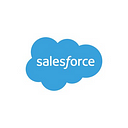Package Experience Cloud Like a Pro!
In this article, we will discuss Experience Cloud packaging options for ISVs. We will also discuss considerations for each option that can impact ongoing maintenance for your solutions.
Whether you call it a portal, a help forum, a support page, or something else, an Experience Cloud site is a beautifully branded digital experience connected to your CRM data. Experience Cloud makes it easy to create these experiences, engage customers, and empower partners.
A package is a container for something as small as an individual component or as large as a set of related apps. After creating a package, you can distribute it to other Salesforce users and organizations, including those outside your company. Salesforce partners use managed packages to distribute and upgrade their solutions for customers.
Salesforce partners can use managed packages to distribute their solutions built on Experience Cloud. A solution can range from a form for onboarding a new financial account or the entire digital experience site where customers’ users can manage their entire financial account information. A managed package solution will depend on the experience you want to deliver to your customers; whether it’s individual components for particular use cases or a complete end-to-end solution.
Here are some of the options currently available to our Salesforce partners.
Lightning Web Components
Lightning web components (LWCs) are custom elements built using HTML and modern JavaScript. They allow developers to build components for Experience Cloud that can be exposed to external users. Your customers’ administrators can easily add LWCs to their pages using the Experience Builder, and then publish those pages for external users.
You can add LWCs to your managed package and enable your customers to enjoy effortless upgrades when you release new versions of your package. Upgrades can be ‘pushed’ to customers, or installed with a single click.
Though you could use Aura components instead of LWCs in your solution, we recommend the more modern LWCs instead. Read this blog for more about the differences between Lightning Web components and Aura components.
Lightning Pages
A Lightning page is a custom layout that lets you design pages for use in the Salesforce mobile app or Lightning Experience. Lightning pages occupy a middle ground between page layouts and Visualforce pages. Like a page layout, Lightning pages allow you to add custom items to a page. However, these items, instead of being fields or Visualforce components, are Lightning components, which allow much more flexibility.
These Lightning pages can be added to managed packages and distributed to customers. Once available, customers can configure their Experience Cloud sites to use these pages.
Lightning pages can be upgraded for new changes. However, after a new version of the package is installed in the customer’s org, old pages are not automatically upgraded. This is to avoid breaking user experience until users can be informed of new changes. Once ready, customers’ admin will have to clone or use the new page for their users.
Experience Cloud Templates
While customers can manually build and configure their sites from scratch with individual Lightning Web Components and Lightning Pages, wouldn’t it be great if customers could start with a baseline experience? That’s where Experience Builder templates come in. As a Salesforce partner, you can create a digital experience site in your packaging org, configure it for the intended user experience, and include Lightning Web Components and Lightning Pages. Then you can export that template and add it to your managed package.
Customers can use that Experience Builder template to build a new site. That new site will be inherit layout and configuration from the template; as packaged by the partner with all the components.
- Once exported, a template cannot be upgraded. A new template can be exported with future changes but the existing one cannot be changed.
- When a template is added and released as part of a managed package, it cannot be deleted. You’d need to release a brand new template with your updates, and add it to the package instead. That will result in multiple templates within your package.
- Once the Experience Cloud site has been created, it doesn’t retain any link to the template from which it was created. Any future changes to the site, will need to be configured manually.
Note: Going forward, we do not recommend Lightning Bolt as a solution for a managed package.
What is the best way to deliver an Experience Cloud solution to your customers?
We recommend a hybrid solution with templates, LWCs and page layouts.
LWCs help deliver solutions for custom processes — and they could be used in the new LWR templates as well! Lightning Pages bring all the standard and custom components on one page. Experience Cloud templates bring all these together as an overall experience for users.
Summary
Experience Cloud makes it easy to create beautiful digital experiences, engage customers, and empower partners. You can use Experience Cloud templates, Lightning Web Components, and Lightning Pages in your managed packages to deliver solutions for your customers’ external users.
Resources
- Salesforce Communities Overview
- Setup and Manage Salesforce Communities
- Export a Customized Experience Builder Template in a Lightning Bolt Solution
- Introducing Lightning Web Components
- Configure a Lightning Web Component for Experience Cloud
- Expand Your Reach with Experience Cloud | Salesforce Trailhead
- Customize your Experience Cloud Site | Salesforce Trailhead
- Partner Community Chatter Group
- AppExchange & ISV Technical Enablement Chatter Group
- Guide to Salesforce Community Licenses (Experience Cloud) for ISVs | b…
- Experience Cloud License Cheat Sheet
